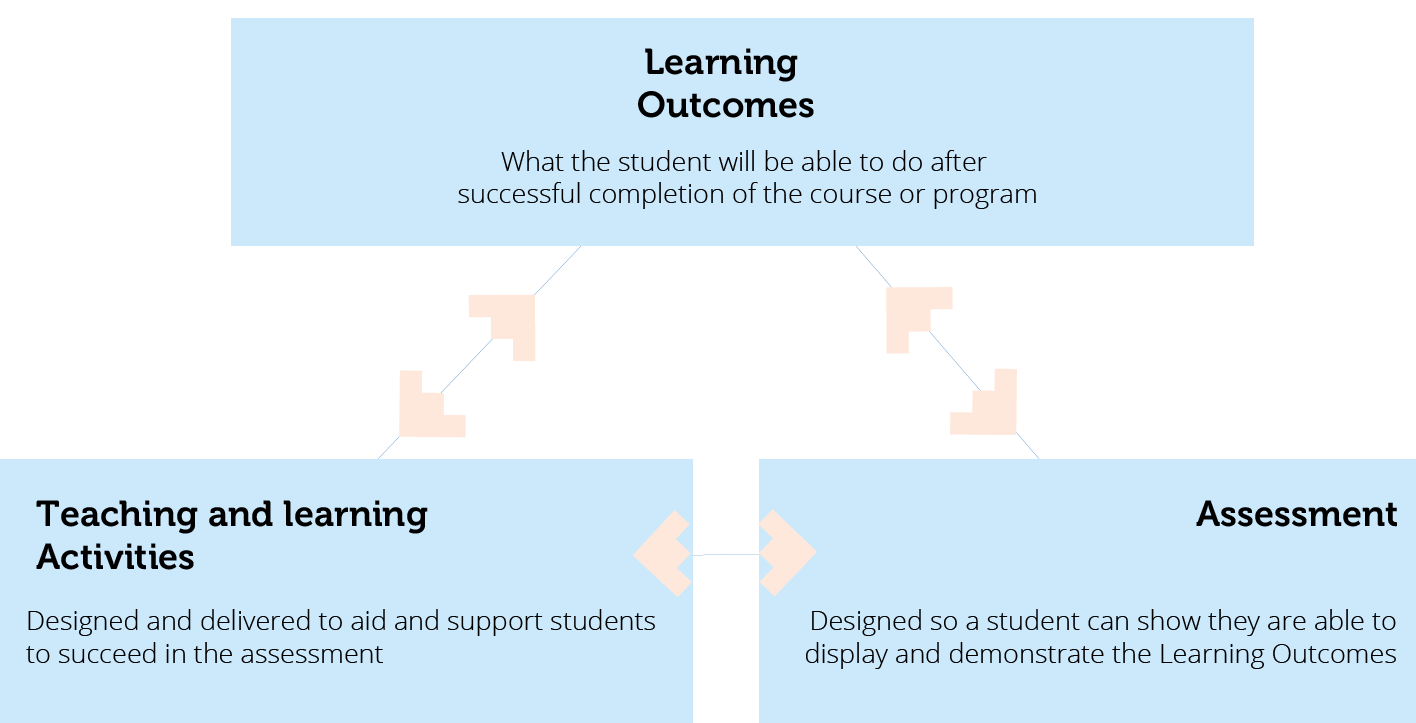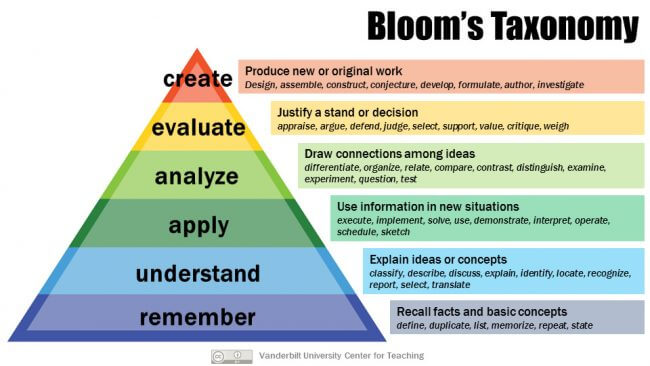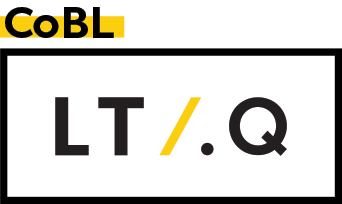Writing Course Learning Outcomes
Communicating expectations
PURPOSE
This learning guide briefly explains the role of course learning outcomes (CLOs) and how to write them.
LEARNING CONTEXT
CLOs should be developed as part of a broader constructive alignment process (Biggs & Tang, 2007) whereby program learning outcomes (PLOs), CLOs, teaching and learning activities, assessments and rubrics are all explicitly linked.
At and institutional level CLOs are guiding statements that help ensure programs and courses meet the Australian Government requirements as identified in the TEQSA Threshold Standards. At a teaching level, CLOs inform students of exactly what they will learn and what they must be able to demonstrate at the end of a course.
Start to view CLOs and assessment tasks as the drivers that shape curriculum so that teaching and learning activities target the requisite knowledge, skills and attitudes (at the correct AQF level). Given RMIT’s emphasis on fostering the employment potential of its graduates, CLOs are key in expressing what is to be learnt, while authentic assessment demonstrate application and workplace relevance.
As CLOs play a central role in defining a course, they form a key part in the University’s contract with a student about what they will learn as a result of completing their degree.

Figure 1: Learning Outcomes
WRITING CLOS
When writing or updating CLOs, start with the end in mind. First check the program mission, program learning outcomes and overall course structure to see how your course fits within that structure. Next write clear measurable statements using the following five steps.
1. Identify the focus of what you want students to learn in your course
i.e. the specific skill, knowledge, or ability students can take into the real world.
Example: The basic recording and reporting techniques commonly used in business.
2. Select the level of rigor (cognition) you want students to demonstrate by choosing one of the six levels of cognition in Bloom’s hierarchy of knowledge.
In addition, use your understanding of the levels in the AQF framework to identify the correct level of rigor. It’s important the right level is chosen as this directly influences the type of assessment you can create to measure students’ learning.
Example: Apply

3. Select a measurable verb to describe the behaviourassociated with Bloom’s level.
View the verb list below.
Example: Demonstrate
4. Add any additional context required by including conditions, qualities or criteria needed to indicate how or when the outcome will be observable. This may include a specific tool, reference, or guideline by which the student will use to demonstrate their knowledge in the real world.
Example: On completion of this course you will be able to:
- demonstrate basic recording and reporting techniques commonly used in business with an attention to detail to a professional level
- prepare and present a legal argument to support a defence based on available and valid evidence, with reference to contemporary common law precedents for a specified case study
5. Ask a colleague to review your CLOs.
Alternatively, if you need further guidance on writing course learning outcomes, please contact the Learning and Teching Portfolio
REFERENCES
Anderson, L & Krathwohl, D 2001, Bloom’s taxonomy revised, viewed 7 February 2019, <LINK>
Anderson, L & Krathwohl, D eds. 2001. A taxonomy for learning, teaching, and assessing: A revision of Bloom’s taxonomy of educational objectives. Allyn and Bacon.
Biggs, J & Tang, C 2007, Teaching for Quality Learning at University: What the Student Does, 3rd edn, McGraw Hill Education
Constructive Alignment Course Design in Higher Education, McGraw Hill Education, viewed 7 February 2019 <LINK>
Guide to Writing Learning Outcomes, University of Adelaide, viewed 7 February 2019 <LINK>
Potter, M & Kustra, 2012, A Primer on Learning Outcomes and the SOLO taxonomy, E Course Design for Constructive Alignment (Winter 2012), Centre for Teaching and Learning, University of Windsor, viewed 7 February 2019, <LINK>
RESOURCES
Visit us
